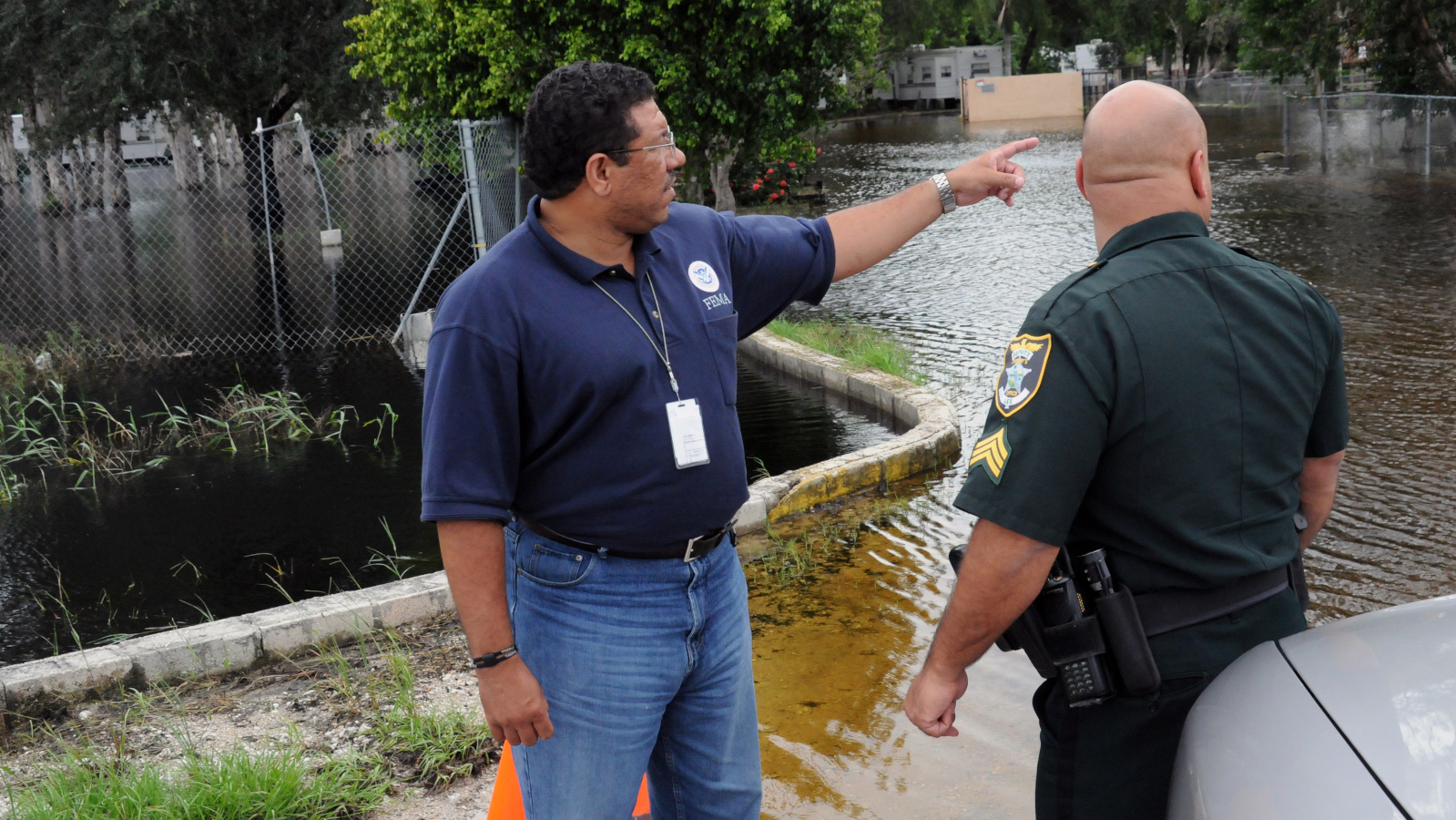
Three years after Dixie Crystal Mathews watched the American flag is raised above the sea after Hurricane Irma hit, damage claims and lawsuits continued against insurers. | VOA/Wikimedia Commons
Between reinsurance costs and social inflation, homeowners’ premiums for some Florida residents soar 40, 50 or even 100%, said Anita Byer, CEO of Setnor Byer Insurance & Risk.
Florida homeowners’ insurance companies experienced reinsurance cost increases of 20 to 30%, Byers, who also is an ex-chairperson for Citizens Property Insurance Corp., the state’s insurer of last resort, told Insurance Rate Reporter.
With very late payments on Hurricane Irma, which Byer called “the hurricane that never ended,” additional support for a rate crisis exists. The fifth most costly storm at $50 billion (adjusted for inflation), Irma caused $17.4 billion in damages in the state, the Florida Office of Insurance Regulation reported.
Water damage also helped cause rate increases, but not just because of storms or flooding.
“Most homeowners are not aware or even thinking that just because their plumbing is working today, it will work tomorrow,” Byer said.
Florida is a relatively new state for development compared to the Northeast, she said.
“We had a lot of quality, new homes. Those homes are coming of age, and they're all starting to leak,” Byer said.
Many homeowners remain ignorant of products on the market that could detect leaks before they occur. Insurance companies have caught on and are asking policyholders to consider that. Inspections also verify the quality of plumbing going into homes now, she said.
Byer called the entire state coastal, so inspections examine window and door coverings to ensure wind mitigation measures are in place.
She attributes social inflation as another reason for the rise in rates, as people expect more out of things – which costs more. But with that comes an opportunity for the insurance company to work on rates to reduce premiums.
Florida has a severe capacity issue, Byer said. Insurance companies run models to calculate how much damage in a community based on how much exposure they’ve insured if a category 4 or 5 storm hit. That’s called probable maxiumu loss.
“And when they run their models, a lot of zip codes of Florida are closed for many of the insurance companies,” she said. “They don't want to put more on the books. They want to be able to get through that storm.”
Byer said Citizens, the state insurance plan, is growing again.
Homeowners aggressively seek to lower their premiums. They reduce dwelling or contents coverage and increase deductibles.
What agents can do is to strip the policy of the “fluff.” First the company runs the home through cost estimators to come up with a purported value. They drill down to ask the client if they have tile or marble, do they have a lot of wall, floor and ceiling coverings? High end wood, or is it drywall?
“We should have probably done this all along to really assess their home. And we could tweak that cost estimate as an average building cost to bring the costs down,” Byer said. “And we've had homes that went from $1.7 million to $1.2 million when we tweak it a little bit.”
Those tweaks could include reducing content coverage, which may start at half the value of the home.
The fluff removed or reduced on the policy could be sewer backup, libel, slander, identity, fraud or anything that’s added, but not considerations like fire risk. Byer said by doing this they get premiums under control, along with changing insurance companies.




 Alerts Sign-up
Alerts Sign-up